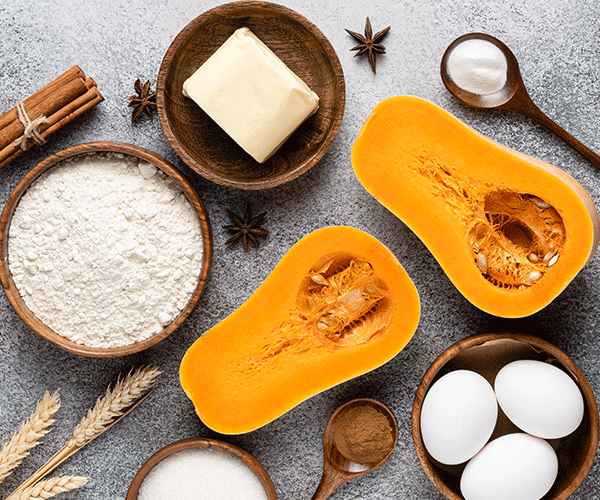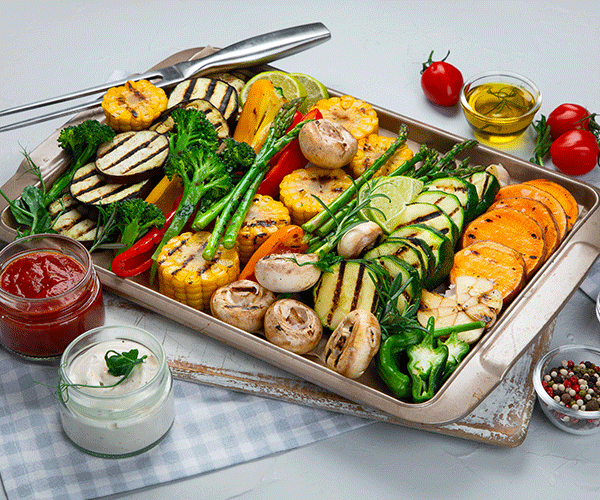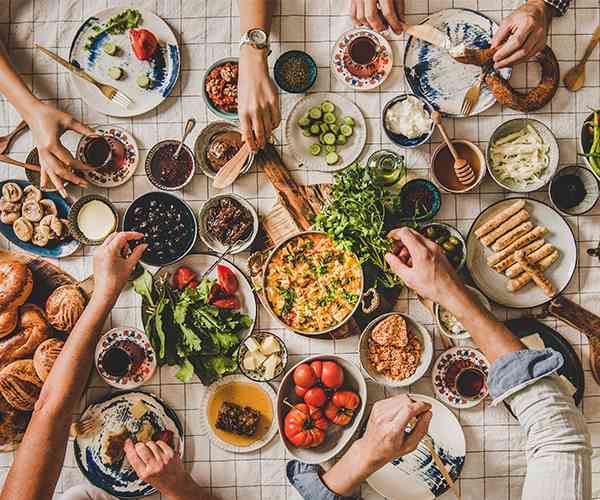Sep 23, 2016
By Stacey Stein
Think of a traditional fall dish and most likely a crowd pleaser such as pumpkin pie, squash soup or sweet potato casserole will come to mind – all are staples for many families during this season. But the multitude of nutrient-dense fruits and vegetables that are part of fall’s bounty can also be used in different and often surprising ways.
Here are a few interesting – and unexpected – ways to incorporate some fall “superfoods” into your cooking, whether for your Thanksgiving meal, or as a treat for your family, friends or yourself!
Fall superfood: Cauliflower
A cruciferous vegetable, cauliflower is a nutritional powerhouse.
“Cauliflower is an excellent source of vitamin C, a good source of folic acid and provides some potassium,” says registered dietitian Shannon Crocker, adding that it also contains antioxidants and phytonutrients that are thought to protect against cancer. As a bonus, cauliflower is also low in calories.
“Cauliflower has a high fibre and water content, which help with digestion – this helps reduce the risk of colon cancer,” says Crocker.
An unconventional way to use cauliflower is as a substitute for white rice. In fact, you can use cauliflower rice to replace white rice in most dishes, which will help lower the carb and calorie count.
To make cauliflower rice, simply chop a cauliflower into pieces and then process in a food processor until the cauliflower has a light texture. You can then use this instead of white rice in a fried rice dish or most other recipes that call for rice.
If you want to incorporate cauliflower into a main dish, try making this roasted cauliflower pasta toss, which is perfect when you’re in the mood for a satisfying, meatless meal.
Cauliflower also works well in soup, which many of us enjoy as the days become cooler. Crocker recommends tossing a few pieces of cauliflower with canola oil, garlic cloves and lemon slices, roasting until golden, and then simmering the garlic and cauliflower (but not the lemon) in low sodium chicken broth. Once ready, purée the mixture and season with some salt and pepper. Finally, top with cheddar cheese and a pinch of red pepper flakes for a warming fall soup.
Fall superfood: Carrots
Deceptively sweet, carrots have few calories (one carrot has 31 calories) and they carry a low glycemic load. “This means they won’t cause a quick rise in blood sugar,” says Crocker. They’re also high in fibre and are an excellent source of beta carotene, which the body converts into vitamin A – key for maintaining good vision and healthy skin.
While munching on raw carrot sticks is a simple way to enjoy this crunchy vegetable, carrots are versatile and can be used in many different ways beyond the obvious carrot cake or carrot muffins.
For example, you can incorporate carrot into your morning smoothie – just add some shredded carrot or carrot purée for a boost of flavour and nutrients. Carrots work well in this mango smoothie recipe, which is high in protein (thanks to the cottage cheese) and fibre.
If you prefer a heartier breakfast, you can try making carrot cake oatmeal. Simply cook the oats in milk (this lends the oatmeal a creamy texture while adding a hit of calcium and vitamin D) and while the oats are cooking, add some finely shredded carrots along with some cinnamon, shredded coconut, ground ginger and nutmeg. You can also toss in some raisins and then add walnuts at the end for a hearty morning dish.
Fall superfood: Parsnips
Packed with fibre (one cup contains seven grams), parsnips are great for proper digestive health. They’re also high in potassium, which is important for maintaining healthy blood pressure.
Crocker recommends using parsnips in recipes that call for carrots, such as cupcakes and muffins. Simply swap parsnips for the carrots – the root vegetable will lend your treats a more savoury flavour.
For a healthier version of a French fry, you can try making baked parsnip fries. You can also make parsnip chips by thinly slicing parsnips into coins, tossing with some oil and sea salt, roasting at 400 degrees, and removing from the oven once they’re crispy and golden brown. Try serving your parsnip chips with this jalapeno horseradish dip.
Fall superfoods: Pumpkin and butternut squash
Pumpkin and butternut squash are both high in beta carotene, low in calories and loaded with vitamin C and fibre. Crocker says you can easily swap one vegetable for the other, keeping in mind that butternut squash will lend a more mild flavour to dishes.
Pumpkin pie might immediately come to mind when you think of fall desserts, but these decadent coconut pumpkin spice mini trifles are also worth a try and have the added benefit of protein-rich cottage cheese (thanks to the inclusion of Nordica Smooth). The recipe calls for pumpkin purée, which can also be used in pancakes and other baked goods.
If you prefer the more subtle flavour of butternut squash, you’ll probably enjoy squash brownies (bonus: if you have vegetable-averse kids, this is a great way to sneak some veggies into their diet). Simply mash up some cooked squash and then add one cup of it to your wet ingredients (a cup of sugar, ¼ cup each of buttermilk and vegetable oil, two beaten eggs and one teaspoon of vanilla) before mixing in the dry ingredients (flour, baking powder, cinnamon, ginger, baking soda, nutmeg and salt) – bake this in a 13 x 9-inch pan at 350 for 35 minutes. Not only does the squash add a boost of nutrients, it also helps keep the brownies moist.
For savoury dishes, pumpkin and butternut squash both pair nicely with pasta – try this smokey bacon, squash and sage pasta, or this pumpkin sage ravioli, which works well as either a main or an app.
The number of different ways in which you can enjoy fall’s cornucopia is almost endless. This autumn, try mixing it up by preparing your favourite fall veggies and fruits in unconventional ways and get the most out of this bountiful season.

Oct 5, 2021
By Stacey Stein - What comes to mind when you think of Thanksgiving? While many of us associate it with a sumptuous turkey dinner shared with family or friends, the holiday is meant to celebrate the fall harvest. And what better way to give thanks for autumn’s bounty than by showcasing local

May 31, 2021
By Stacey Stein - Summer in Canada is associated with time-honoured traditions like camping in the great outdoors, relaxing lakeside at a cottage, and enjoying backyard barbecues, reveling in the warm weather and longer days. - With Father’s Day and Canada Day around the corner, many of

Apr 22, 2021
By Stacey Stein - Most mothers have been putting in loads of overtime this past year, earning a well-deserved bonus. Which is why those closest to Mom might want to consider kicking things up a notch this Mother’s Day. While a spa day may have to wait until next year, a thoughtfully planned M

Mar 18, 2021
By Stacey Stein - With international travel on hold and festivities limited to our families, this Easter is the perfect time to try something new by thinking global when planning our holiday meal. - “This year our celebrations look different – we’re not having big family gatherings,